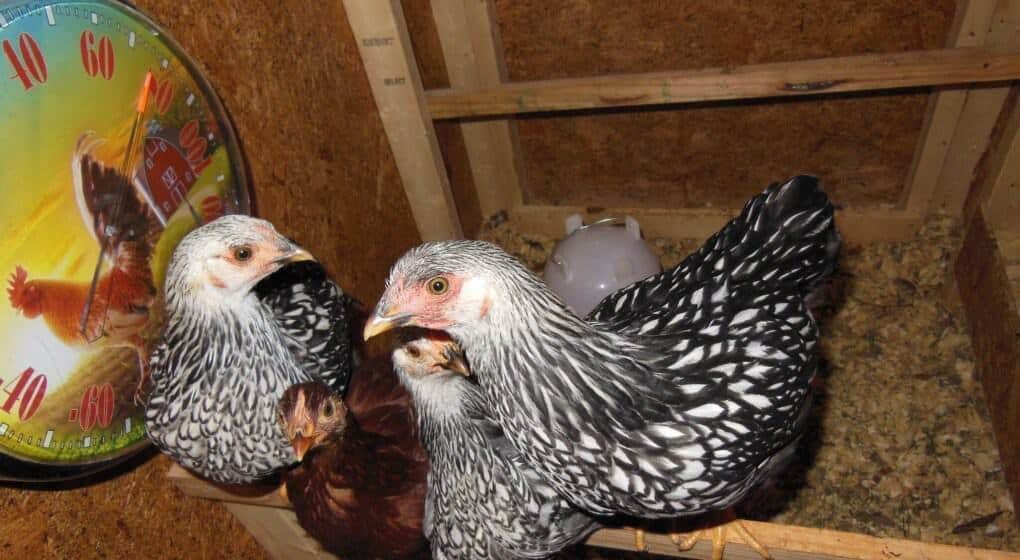So you’re planning on getting chickens? Or you already have half a dozen little fluff balls chirping away in a cardboard box because they were just so adorable you had to get some? Either way, you’re going to need a place to keep your new backyard chickens. That little cardboard box will not last very long. Soon, you’ll have inquisitive little flyers perched on the sides of the box and eventually one will jump out or fall off.
You need a chicken coop. But don’t stress. It’s not that hard.
Use What You Have to Build a Coop
I’m not going to give you a step-by-step guide on how to build a chicken coop. There will be no plans, cut list, or listed tools. Chicken coops come in so many shapes and sizes. Most of us just use what we have laying around.
Sure, we could download one of the many chicken coop plans from the internet. Sure, we could run off to the local hardware store, and build a coop that looks just like the one pictured on some website. But let’s face it. We like to save money. Some might call uscheap. But the less we put into our backyard chickens up front, the sooner those fresh eggs will have paid for themselves.
Chicken coops come in so many varieties. I have seen a chicken coop made from an old car sitting on blocks in the backyard. Some have been made from old wooden pallets. Some built-up in the corner of a barn. I’ve even seen ones that looked like they were built for a chicken king.
The bottom line is that there are many ways to make a chicken coop, but they all have certain things in common. These are the things that we need to keep in mind in the design and building of our chicken coop. The chickens really don’t care how much we spend, as long as their needs (and some of their wants) are met.
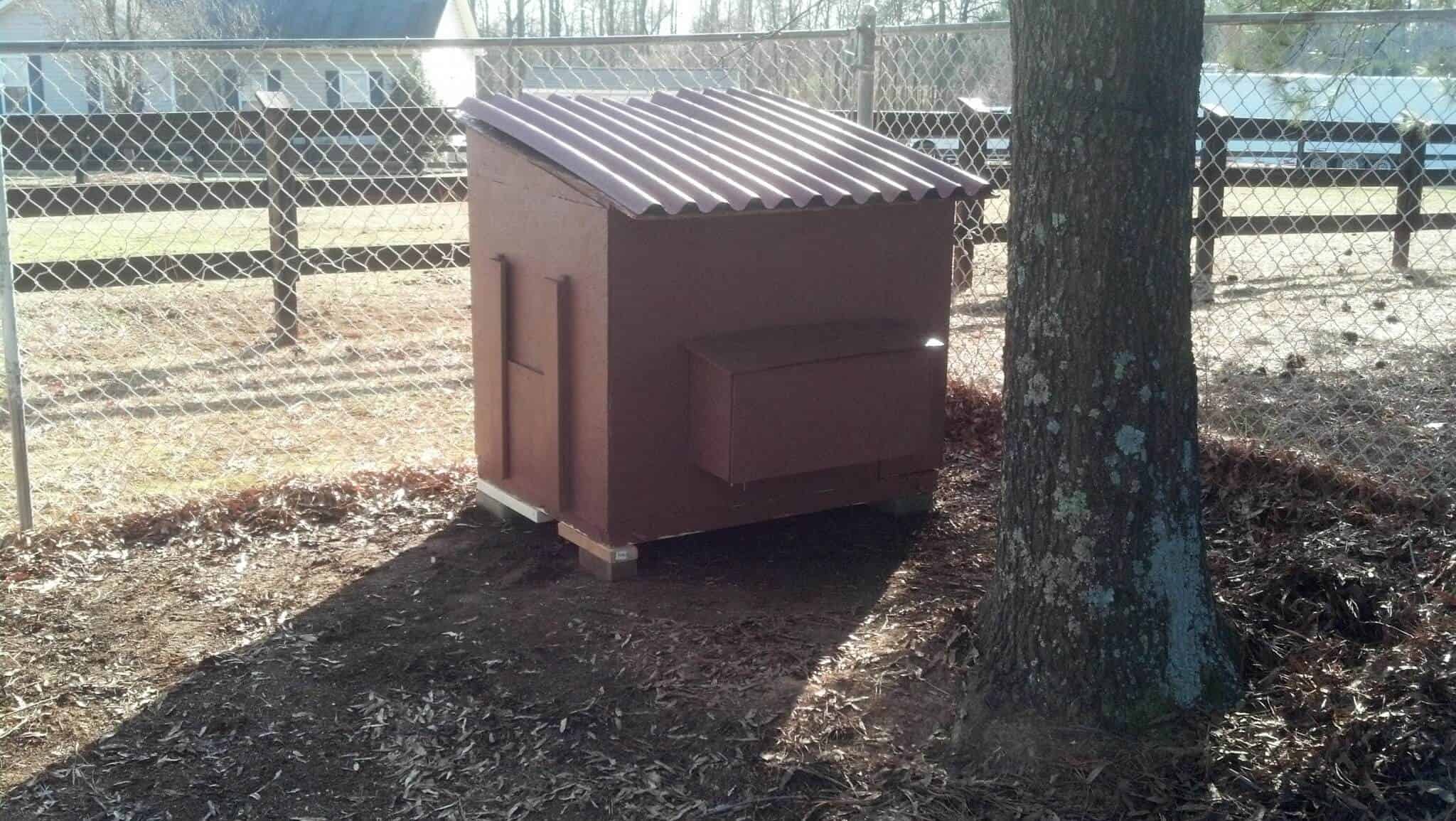
Main Considerations for Building Chicken Coops
First thing to consider is how much space do we need for our chickens? We need to make our coop big enough to hold our entire flock. They will cram onto one roost for the night, bunching up as close to the “prime spot” as they can get, but they still need a certain amount of space to be happy, healthy chickens.
Most chicken owners agree that, for backyard chickens, the chicken coop needs to have two square feet of floor space per chicken. This gives them room to move around, to escape from the rooster or hen that’s higher on the pecking order, and to scratch and peck. This should be considered the absolute minimum.
Yes, we can put more chickens into a smaller area like the confinement chicken houses do, but we wouldn’t want to buy their eggs. So, why would we treat our chickens the way they do? In addition to this space, it is best to allow 8–10 square feet per chicken in a run, outside the coop, for sunlight and exercise. The back yard is great for this. The more space they have, the more they will forage for their own natural food. This not only saves on feed, but makes for a much healthier, happier chicken, which in turn gives us the healthiest eggs.
Now that we have an idea of how much room we’re going to need, we can start planning our coop. Whatever material we decide to use, there are a few things that we have to have. The most important thing is that the coop needs to be predator proof.
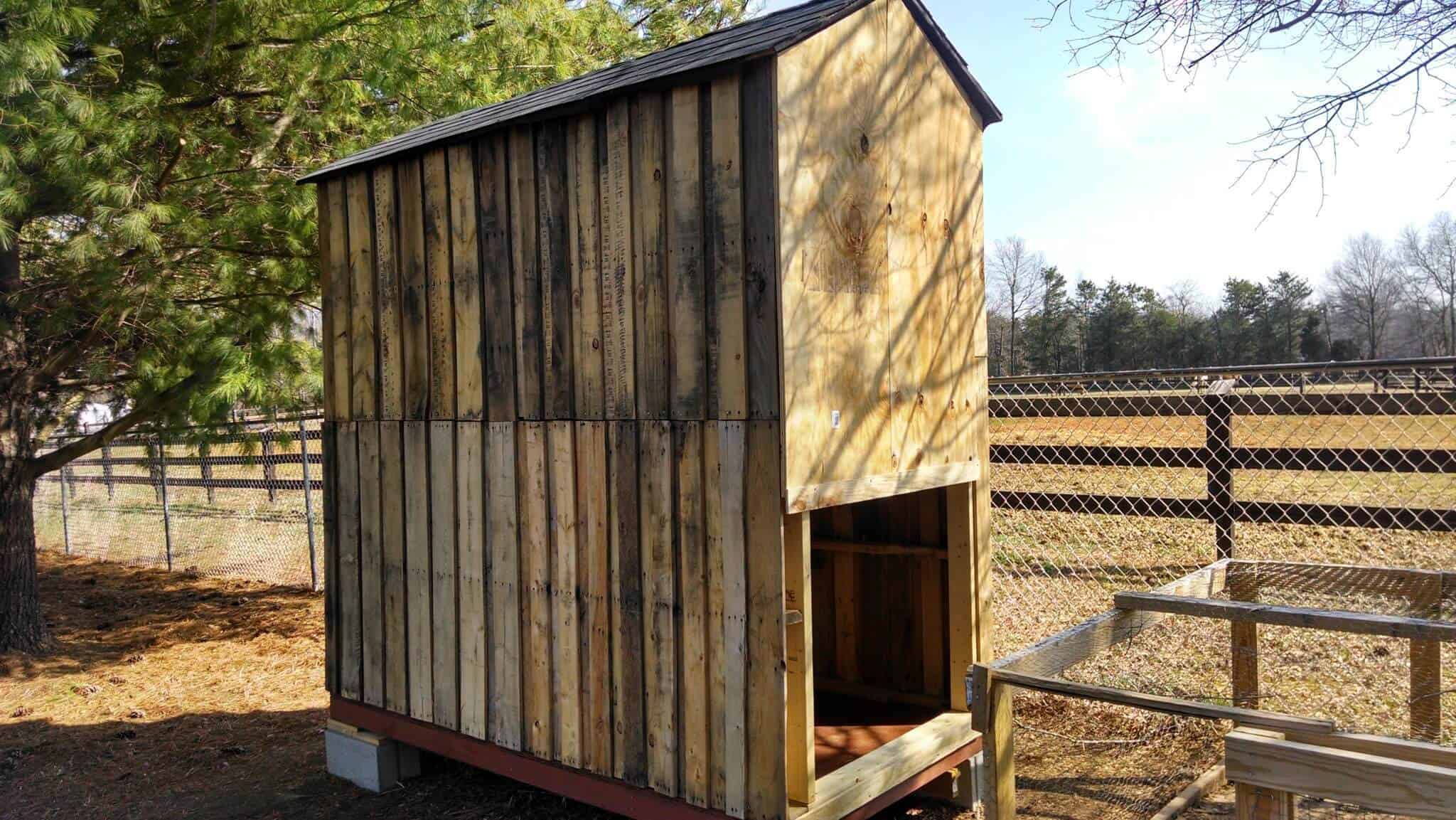
Keeping Our Chicken Coop Predator Proof
Chickens can withstand some serious weather—cold, hot, rain, snow, wind—but what they cannot do is defend themselves very well. Our chicken coop has to be a safe haven for our flock. There are many ways to go about this. The most obvious is to build it tight, like Fort Knox. The problem with this idea is that chickens need air flow, sunlight, and a way in and out.
We can create some kind of door that, when closed, will keep predators out. The coop also needs windows to let sunlight and air in and ammonia out. Keep the windows as high off the ground as possible and cover them with chicken wire or hardware cloth.
Try to keep the bottom half of the coop with no holes to prevent predators from entering from the ground, and keep the windows and any other openings on the top covered with wire to stop the climbing predators.
One note on predator prevention has nothing to do with the coop. Having a good dog around does a world of good. The one thing to be careful of is that the dog isn’t itself a predator. Luckily most dogs can be trained. We lost 3 chickens to our dog before she figured it out. But now our chickens have a predator free back yard, thanks to our wonderful dog.
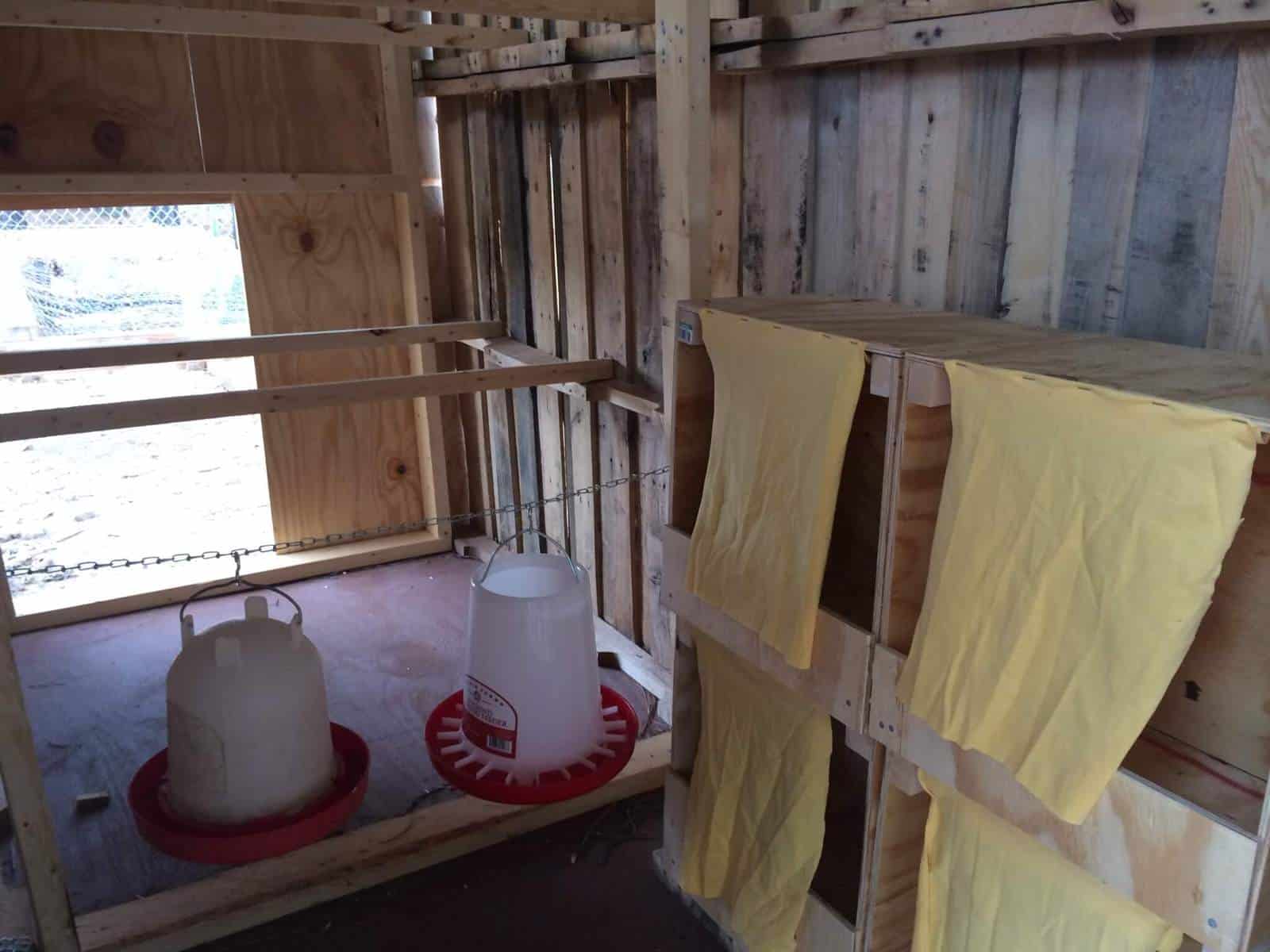
Other Chicken Coop Design Considerations
The next most important thing in our coop design is that it stays dry. Chickens do not like water, rain, or snow. They want and need to stay dry. Chickens can withstand some very cold temperatures as long as they stay dry. Wet chickens in cold weather can be a deadly combination.
It is also best for us if the floor of our coop stays dry. If rain can get into our coop, it will dampen the pine shavings or whatever we use on our floor to soak up chicken droppings. Wet flooring will reduce its effectiveness at keeping the coop dry and odor free. If our coop floor is made of wood, having water and damp wood shavings will cause the floor to rot.
Inside the predator resistant coop, we will need roosts, nesting boxes, food, and water. Alternatively, the food and water can be kept outside the coop, but we have to be available to open the coop early in the morning and close it up at night.
The nesting boxes need to big enough to comfortably hold a hen, but not too big that they don’t feel a little closed in. That makes them feel safe and they will only lay eggs where they feel protected. Having 12” to 18” on all three sides should suffice.
You will need one nesting box for every three laying hens. They will share boxes, but they will also get rather irritated if another hen is in their favorite nesting box when they are ready to lay. This can be rather entertaining if we happen to be around to see the upset hen pacing back and forth, clucking up a storm. It is obvious that what she is saying are not very nice things about the hen occupying her spot.
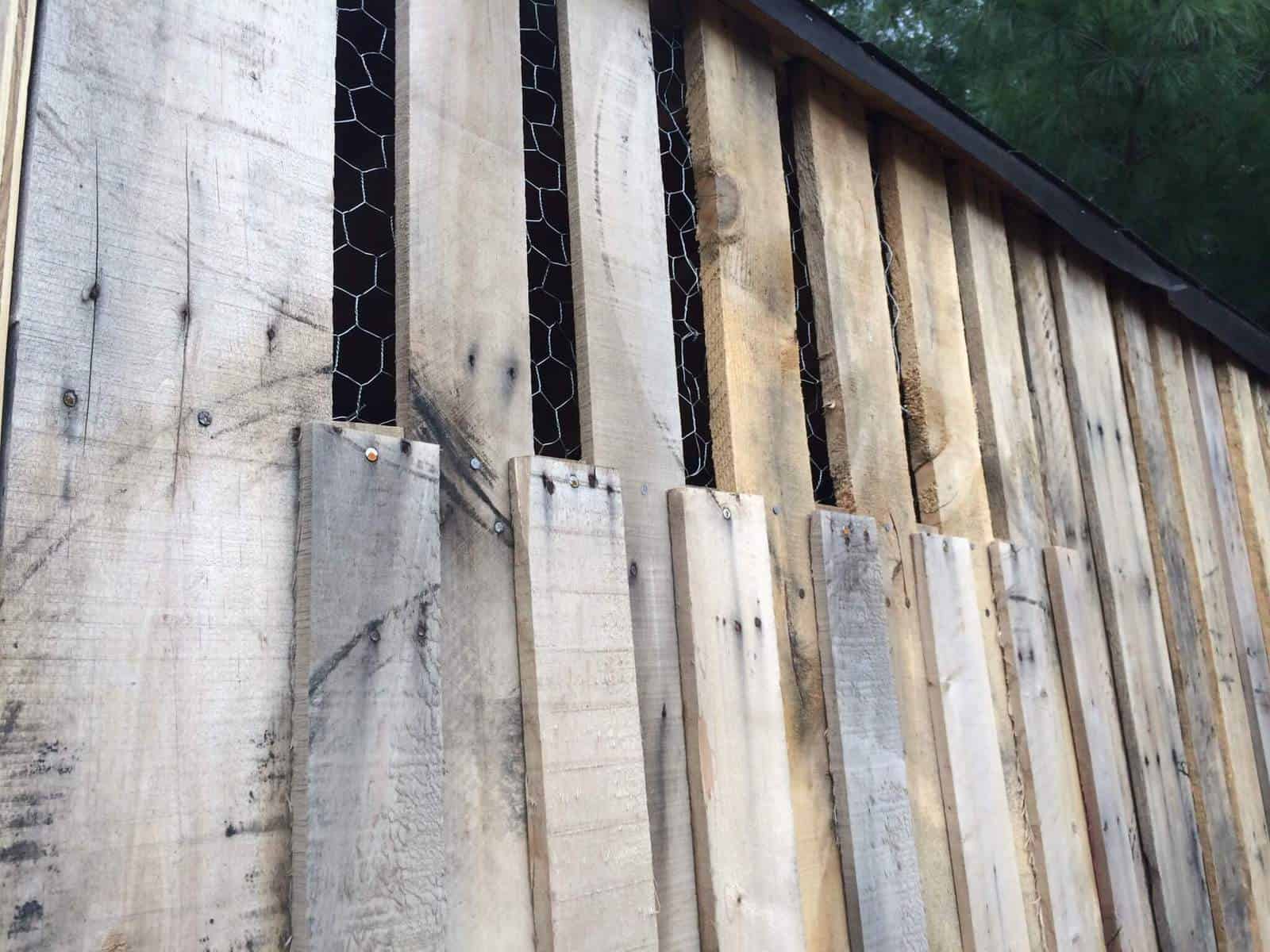
As for the roosts, we need a minimum of six linear inches per chicken. We may want to add a little more for roosters and larger breeds. Running a 1”x2” from one wall to the other should meet our needs. I have found this to be plenty strong up to four feet long. I have not tested longer roosts, but I am sure we could make it a little longer and still hold our chickens.
It is a good idea to sand the roosts, if they are made from wood, to prevent the chickens from getting splinters in their feet. We can make multiple roosts, but try to have enough room on the highest level of roosts for all our chickens. They will all want to be up as high as possible, and any that don’t have room on the top roost will get pooped on if the lower roosts are below the higher roosts.
Also, be careful not to put our roosts too high up. Chickens will get to the top roosts for the night. Then, in the morning, they will try to go straight to the ground from their roosts. I have had several chickens develop a limp from trying to jump off of a perch six feet high, and out the foot-wide chicken door to the ground. I removed that roost. Now, their highest is about four feet off of the floor.
These are the necessities to include in our plans for our new chicken coop. There are lots of other things to consider which make the coop better and more maintainable for us. Having a door to walk into, can help. A smooth floor can make shoveling out used bedding and chicken manure much easier. These two features I find absolutely necessary. But we can get the job done with a short coop, too. There, we would raise the roof like a lid and shovel bedding out through the top.
One last thing to keep in mind when determining the size of the coop: remember that chickens are addictive. You will most likely end up getting more, so make the coop bigger than you need or you may find yourself building a second chicken coop. If you do build a second one, don’t feel bad. Having an additional coop is good when you need to quarantine a chicken, or when you need a home for your new batch of little chicks that are not big enough to run with the big flock yet.
I hope this helps. Best of luck in your new chicken endeavor.
